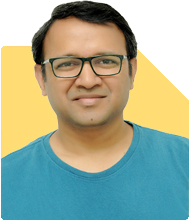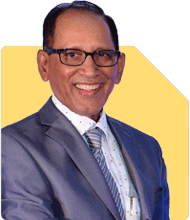Ramalingam Kalirajan |10017 Answers |Ask -Follow
Mutual Funds, Financial Planning Expert - Answered on May 02, 2024
He has an MBA in finance from the University of Madras and is a certified financial planner.
He is the director and chief financial planner at Holistic Investment, a Chennai-based firm that offers financial planning and wealth management advice.... more

Hi I am working as a chief manager in a psb I will retire in another 8 plus yrs would like to know if I can have opportunities for early retirement. Like In another three plus yrs. Can you suggest if I need to take up any course so that I can get better opportunites out of the bank
Consider courses related to finance, leadership, or even entrepreneurship, depending on your interests and long-term goals. Have you thought about networking within your industry or attending seminars and workshops to stay updated with the latest trends and opportunities?
Remember, early retirement is not just about leaving your current job but also about preparing yourself for the next chapter of your life. With careful planning and continuous learning, you can pave the way for a fulfilling and rewarding transition.
You may like to see similar questions and answers below
Kirtan A Shah | Answer |Ask -Follow
MF Expert, Financial Planner - Answered on Nov 01, 2023
Patrick Dsouza |1346 Answers |Ask -Follow
CAT, XAT, CMAT, CET Expert - Answered on Feb 21, 2024
Ramalingam Kalirajan |10017 Answers |Ask -Follow
Mutual Funds, Financial Planning Expert - Answered on Jun 09, 2024
Milind Vadjikar | Answer |Ask -Follow
Insurance, Stocks, MF, PF Expert - Answered on Nov 03, 2024
Radheshyam Zanwar |5995 Answers |Ask -Follow
MHT-CET, IIT-JEE, NEET-UG Expert - Answered on Jul 31, 2025
Ramalingam Kalirajan |10017 Answers |Ask -Follow
Mutual Funds, Financial Planning Expert - Answered on Jul 31, 2025
Radheshyam Zanwar |5995 Answers |Ask -Follow
MHT-CET, IIT-JEE, NEET-UG Expert - Answered on Jul 31, 2025
Dr Nagarajan J S K |2099 Answers |Ask -Follow
NEET, Medical, Pharmacy Careers - Answered on Jul 31, 2025
Radheshyam Zanwar |5995 Answers |Ask -Follow
MHT-CET, IIT-JEE, NEET-UG Expert - Answered on Jul 31, 2025
Ramalingam Kalirajan |10017 Answers |Ask -Follow
Mutual Funds, Financial Planning Expert - Answered on Jul 31, 2025
Ramalingam Kalirajan |10017 Answers |Ask -Follow
Mutual Funds, Financial Planning Expert - Answered on Jul 31, 2025
Radheshyam Zanwar |5995 Answers |Ask -Follow
MHT-CET, IIT-JEE, NEET-UG Expert - Answered on Jul 31, 2025
Nayagam P P |9737 Answers |Ask -Follow
Career Counsellor - Answered on Jul 31, 2025
Nayagam P P |9737 Answers |Ask -Follow
Career Counsellor - Answered on Jul 31, 2025


























